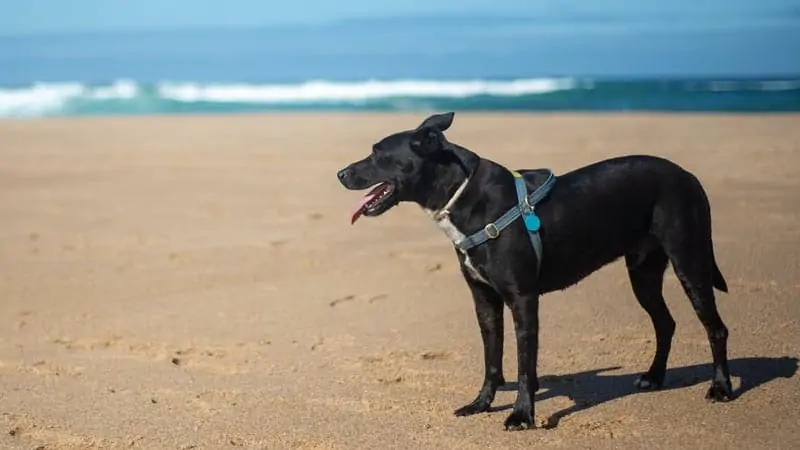A travel time out with your fluffy canine is always an amazing experience. And, then there is the big question about putting your dog in the footwell during travel. However, it could be right to have your canine experience the ride from the footwell, perhaps not—let’s find out.
It is okay to have a smaller dog in the footwell during travel. Bigger dogs, however, will not have enough room on a lap to feel relaxed. A bigger dog in the footwell during travel hinders the driving experience, and passengers are stuck having to keep the dog from jumping out the window.
There may be no laws restricting you from putting your dog in the footwell during travel depending on your state. However, a dog in the footwell is synonymous with a bad driving experience, resulting in an accident causing you and the dog injury.
There is more to learn about this subject, putting your dog in the footwell during travel; give this article some more reading to learn more.
Can I Put My Dog in the Footwell?

An AAA/Kurgo survey shows almost 6 in 10 drive with their dog in a vehicle at least once monthly within the past year, and you are part of the figures. However, the dog, yourself, and a passenger’s safety is not negotiable.
With many people loving to travel with their dogs in the footwell, you want to ensure the right restraint for your dog to enhance the driving experience.
If your dog has its way in the footwell, it would want to get a clearer view of the outside. Its instinct could drive it to jump out of the vehicle, especially when you come to a halt. Unfortunately, the experience can be bizarre if airbags become active, and therefore not okay to place your dog in the footwell.
Meanwhile, if you must place a smaller dog in the footwell, ensure it fits into a carrier not directly opposite the airbag. Suppose the airbag deploys; it would not be safe for the dog. Also, when you match the brakes suddenly, it badly hurt your fluffy companion which is not on the list.
You love your fluffy and clingy canines, so you also want to ensure their safety. A vehicle footwell is not always the safe spot so you must be safety-conscious with your dog in there.
Where Should a Dog Sit in the Car?
Your dog should sit in a crate and not the footwell while you travel. You can safely sit your dog using a divider between the back seat and the load area to restrain it in the back area. You can use a crate to enhance containment so that the dog is safer even if the rear window breaks on a rollover.
Alternatively, you can have your pooch in the rear seat belt and harness, or in the cargo to protect it from getting hurt from sudden brakes, but not in the front seat with or without a carrier.
Meanwhile, be careful not to invest in a load divider that is inferiorly built with unreliable materials. You can purchase a load divider fitted with bolts to the vehicle frame. If your load divider easily gets ripped with the hands, you need another that can sustain an impact to protect your dog.
What is the Safest Place for a Dog in a Car?

Typically, any place away from the front seat makes a safe place for your dog to ride in while traveling in a car. Dogs react differently to the airbags, and of course, airbags and seatbelts are not built for them. Christina Selter, founder of Bark Buckle UP in San Diego, in an interview with The New York Times, confirms this fact saying, “…. That airbag will kill a small dog sitting on your lap, just like a child.”
Moreover, you do not want your dog pacing the car around the airbag in the front seat to prevent possible injury from exposure to airbag deployment. However, most modern vehicles feature airbags not only in the front but also in the sides and rear. It, therefore, suggests that the center of the back seat could be the safer place to sit your canine with a seatbelt.
If your vehicle lets you disable the airbag in specific places, you can have it deactivated where your paw friend sits.
While your dog occupies the rear seat, you need a quality cargo net for protection if not using a secured pet carrier. Make sure to restrain your dog so that a collision does not fling it forward.
Can a Dog Sit on a Passengers Lap?
It is not safe for your dog to sit on a passenger’s lap. Unlike an adult occupant, your dog wants to stick its head out to enjoy the moment while on a passenger’s lap, unaware it is unsafe. Unfortunately, a dog can accidentally fall off a passenger’s lap or gets fiercely ejected in a collision through the vehicle window.
It only takes a sudden turn or stops and there goes your dog flying out of the vehicle. Pets are not humans, and so do not readily sense danger or know when it could be dangerous for them.
Meanwhile, in extreme cases, your insurer may decline your claims if investigations reveal that your unrestrained dog caused the crash, making you liable for the damages.
Pet restraints are the way to go, unfortunately, only 16 percent use them. Before you invest in one, consider getting a pet carrier or dog guard. The vehicle seatbelt is not designed with your pooch in mind, so look away from it. Do not just pay for the restraint, ensure its crash test is standard to improve your dog’s safety.
An unrestrained dog is a moment away from injuries and, perhaps, in extreme cases, death. You do not want distractions while traveling. Eliminate your dog’s interference to improve your control of the vehicle by retraining it during travel.

